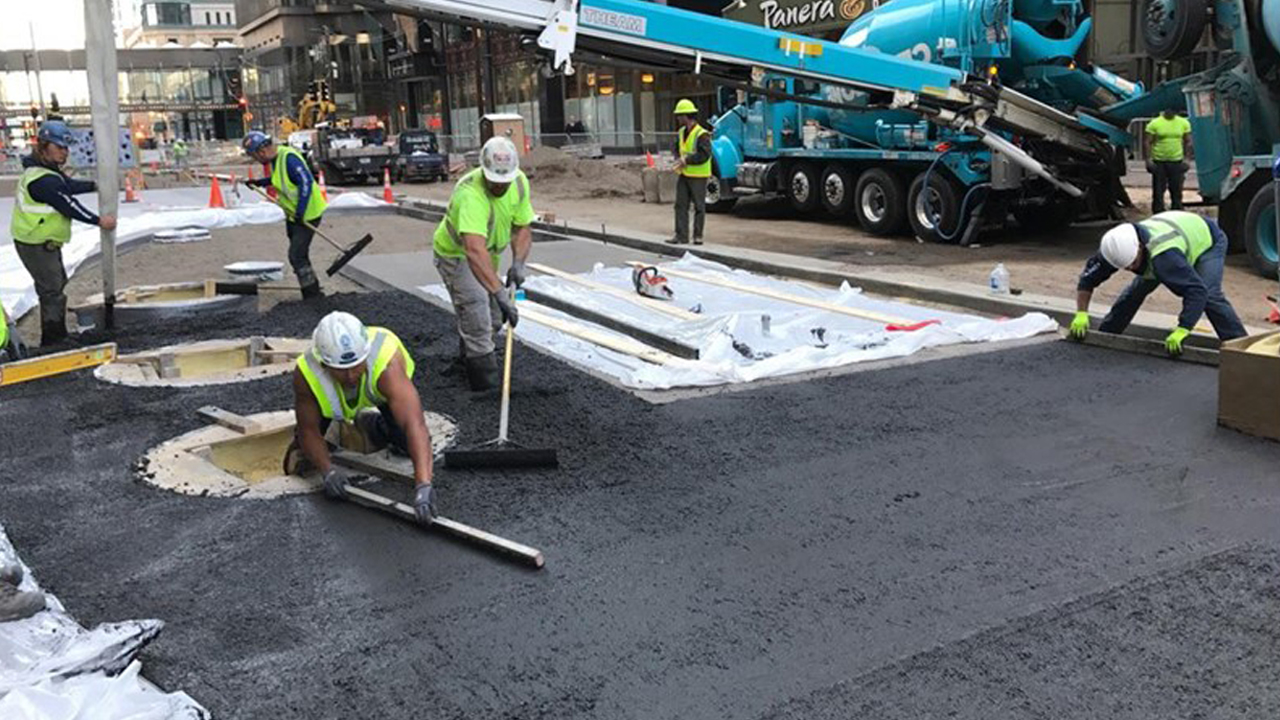Local economies are seeing a reduction in commerce, sales tax, gas tax and other revenue. Whether you expect or experience reduced revenue in the months ahead, here are 10 ways to prioritize projects within your capital improvement plan (CIP).
As you seek to capitalize on potential funding, help drive the local economy or find ways to move key projects forward with limited budgets, the following tips can help hone or re-prioritize your CIP – and best position your community for the challenges and opportunities that lie ahead.

1. Do less with less
It's important to match the funds you have with realistic expectations, as overreaching can have long-term consequences. This means gaining a comprehensive understanding of what you have by completing some less expensive investigations, uncovering what really needs to be done from a priority standpoint, then using the right tools to find out how to get there.
"Do less with less" also means finding non-traditional solutions to move key projects forward. Here are two examples:
- Revised approach to forcemain replacement. One SEH client recognized an originally planned wholesale forcemain replacement wasn’t possible with the funds available. In response, the solution was to complete a non-invasive pipe condition assessment in order to uncover the most critical repair needs, allocate funds specifically for the segments in need of repair, and avoid the cost of wholesale replacement. This approach will allow the city to meet its key goals but with a significantly reduced capital cost.
- Non-traditional pond assessments. Another SEH client is conducting pond assessments in a non-traditional way. Our team is canoeing with a depth finder to uncover which areas are in dire need of maintenance – rather than the traditional approach of sending out a backhoe to start excavating pond bottoms before it’s fully understood how much sediment has built up.
2. Prioritize economic impact
Prioritizing projects that have the potential to create economic impact can create flexibility and funding for future projects. The challenge, in an uncertain time, is uncovering which projects within your CIP will create the highest return on investment (ROI) in the months and years ahead.
As you seek to answer this challenge, here are four ways (among many) to spark economic impact with future projects and/or to ensure the current projects within your CIP create the hoped for ROI:
- Improve infrastructure planning and decision making through cost-benefit analyses. Engage a variety of public and private stakeholders from across different levels and boundaries. Gaining a comprehensive picture from multiple perspectives will help you make more accurate, strategic decisions and weigh the benefit versus cost of a project. Analyze for the short- and long-term, examine lifecycle costs, and determine alternatives now for long-term maintenance and improvement.
- Where possible, encourage innovation. Infrastructure is being shaped by innovation – technology, in particular. Providing projects and a community where private developers, businesses and citizens can more quickly and fully take advantage of improvements in science and technology will maximize economic opportunities. In fact, a study by research group URENIO estimates that “smart cities” will see an overall economic development of 5% annually over the next few years. The rise of 5G is one such example.
- Explore alternative approaches to utilize private investment resources. There are many types of partnerships, such as public-private partnerships, that create flexibility with regard to spending and ROI. For the City of Kaukauna, working with a developer through public-private partnership made their new 24,000 sq. ft. library possible without using any tax dollars. This video, featuring Kaukauna Public Library Director Tony Wieczorek, reveals how the partnership made it possible as well as community benefits.
- Incorporate climate resilience into infrastructure investments. Proactivity with regard to climate-related stresses or hazards (e.g., increased flood potential, drought and fire risks, etc.) ensures your infrastructure is resilient and adaptable. This is vital to the long-term sustainability of your infrastructure as well as the viability of your community and economy.
3. Focus on maintenance
Letting maintenance fall by the wayside can have negative impacts on a community’s financial future. With a reduced budget, it’s especially important not to lose sight of maintaining your existing infrastructure system – for example, timely overlays, seal coats and crack sealing.
Be proactive with low-cost maintenance; it can save you from high-cost failures in the years ahead. Smaller maintenance projects may not be flashy, but focusing your budget on timely, critical fixes can extend the life of various roadways and other connected areas by 2-3X. In turn, this maximizes your budget.
– Jenna Obernolte, SEH Rochester Office Civil Engineering Practice Center Leader

4. Combine infrastructure and utility projects
Nearly every city’s CIP has more needs than what is available in the budget. As a result, it’s important to find ways to “water two plants with one hose.”
Does a street in need of reconstruction also have utilities underneath it nearing their life expectancy? Could you maintain the surface until a utility replacement is needed and shift the money to an area in need of both? Is there a nearby water main in need of replacement? Could you extend the scope of the street reconstruction an additional block to coincide with the water main and handle both simultaneously? Maybe adding a few blocks to the project would make a city street more attractive to private investment for connected business locations?
One critical win strategy is to look for sweet spots where you can work on both sides of your infrastructure system – surface infrastructure and utilities – as this can provide cost benefits to both aspects of your infrastructure system.
5. Find the silver linings and take advantage
Many cities saw a reduction in traffic volumes early on in the pandemic. In fact, communities throughout the U.S. saw a 30-40% reduction in traffic in 2020 according to the Federal Highway Administration.
Strategic minds took advantage of reduced traffic volumes and, subsequently, reduced construction costs by adjusting construction schedules and project scopes to make timely infrastructure replacements and repairs to higher volume roadways. Some projects originally scheduled in phases to allow for minimal traffic disruptions using roadway or sidewalk closures were able to be completed in one fell swoop.
Keep a close eye on the projects within your CIP that could be moved up the list and completed fairly quickly/inexpensively in light of trends in the current market.
We're seeing a little bit of a new normal. On-site project meetings have returned, but they are much fewer. Project owners are realizing that projects can move forward effectively – and more inexpensively – without as many face-to-face meetings.
– Jenna Obernolte, SEH Rochester Office Civil Engineering Practice Center Leader

6. Factor in volumes
Look for opportunities to invest your money in projects that affect the entire community. Although there are always needs on “sleepy” residential roads that see just 50-80 cars per day, be mindful when planning for your capital projects. Consider adjusting maintenance or repair schedules and reassigning funding that was originally allocated to sleepy roadway projects to ones that will have greater, more immediate impact.
7. Don’t look too far ahead
CIPs are usually a community’s funding/budget roadmap for 2-5, sometimes 10 years. Understandably, this year cities are anxious about potential delays in tax payments, gas tax decreases, smaller amounts of traveling and tourism, decreased funding for roads as a result, and being stretched thin in terms of need versus budget. Things will rebound, but it will take time.
In response, it may be wise to look to your more immediate future: the next 1-2 years. Consider focusing on near-term needs to keep your community moving forward. Move projects that can wait a few years down the priority list. Remaining productive and strategic with the funding you do have can breed positivity and momentum; it can also limit financial difficulties in the future.
8. Take advantage of low interest rates
Low interest rates allow you to borrow more at less of a cost to your community. Whether the effort here involves taking out a new bond to fund high-priority projects or refinancing existing bonds, we’re seeing a number of existing client partners save significant funds in this way. This benefit can also attract public-private partnerships, as developers are always seeking to move projects forward with lower interest rates/better value.
One SEH client was planning to pay cash for three projects this summer. However, because interest rates are very low, they’ve opted to hold on to their dollars and take out a new, low-interest bond. This is partly because of the low rates, but also because it’s impossible to predict what’s ahead – having “cash in hand” provides their community with a cushion and future flexibility.
Explore your options. Consider the projects at the top of your priority list and whether a new bond or low-interest loan is available at the right price.
9. Minimize business impact due to construction schedules
Many businesses and their employees have been financially impacted by the pandemic. Consider delaying projects that would re-close these businesses or limit access to them – thereby causing further financial harm to each business and your economy as a whole. Phasing and staging projects to maintain business access can get costly, so shifting the project to a different time might be the ideal solution.
If a project must move forward, partner with local businesses to uncover creative ways to avoid impacting their reach and access during construction. Also, seek opportunities to keep them connected to potential funding sources in order to bridge any financial gaps.
10. Ultimately, get projects ready
It’s a challenging time but also one of opportunity and potential. It’s important that you strategically plan and get critical projects ready in order to capitalize on new funding sources and/or re-funded existing programs.
Update and hone your CIP, highlight key projects to move forward with, remove projects that can wait, and underline those with regional benefits, transportation connections and economic development opportunities. Getting projects shovel ready will best position you to capitalize regardless of what’s ahead.
About the Author

Jenna Obernolte, PE* is an experienced senior engineer and SEH’s Rochester, Minnesota office civil engineering practice center leader. Her passion is in helping others find success, colleagues and clients alike.
*Registered Professional Engineer in MN, IA

.png?width=113&name=SEH_Logo_RGB%20(1).png)
